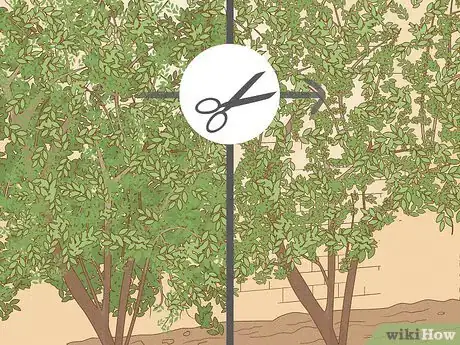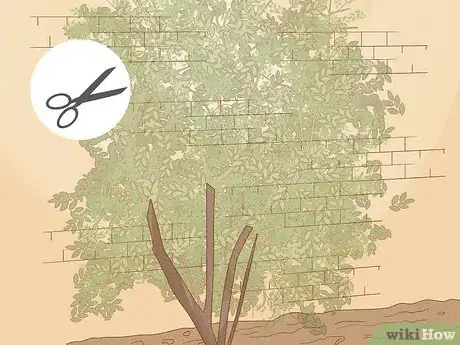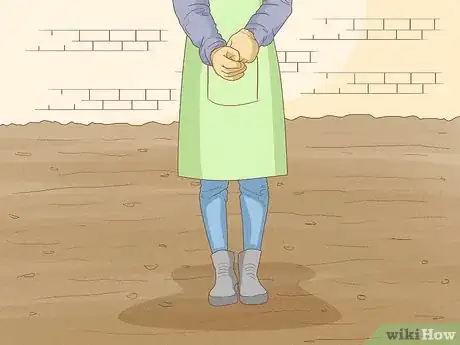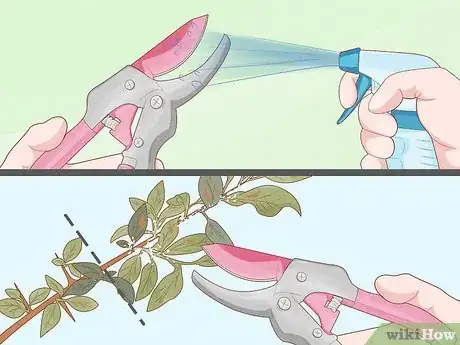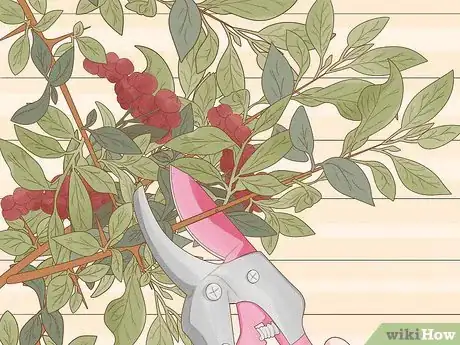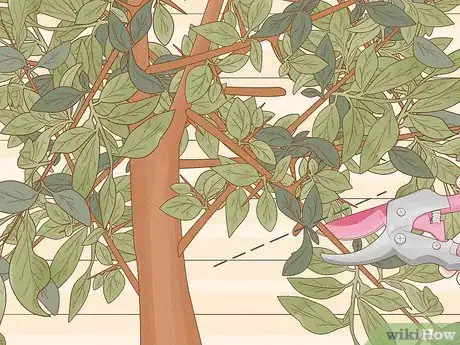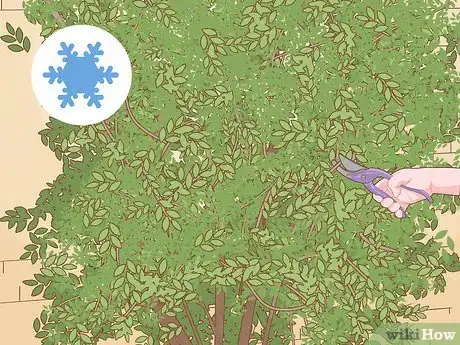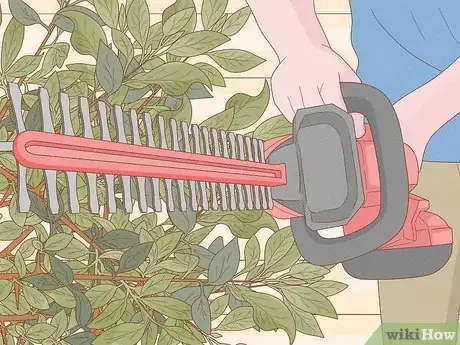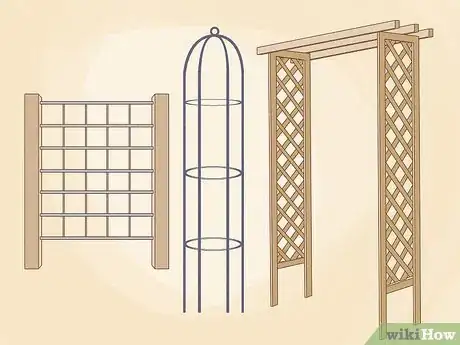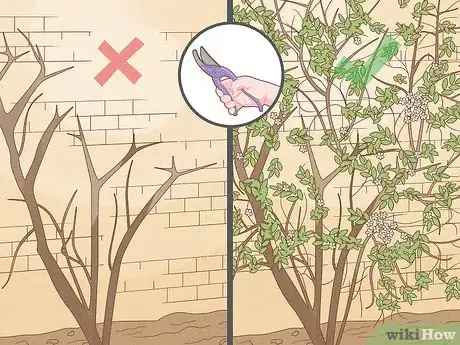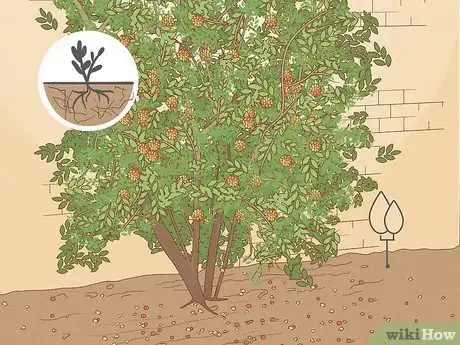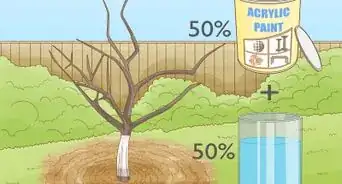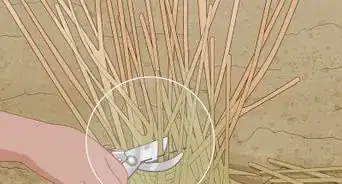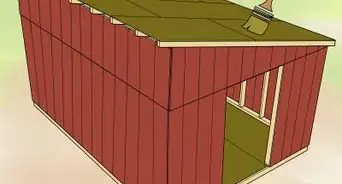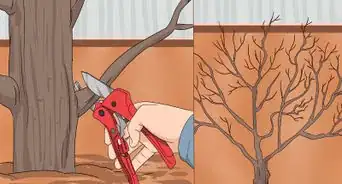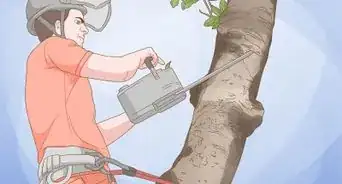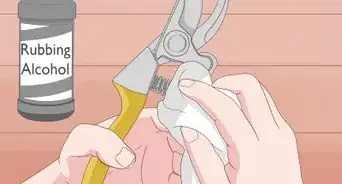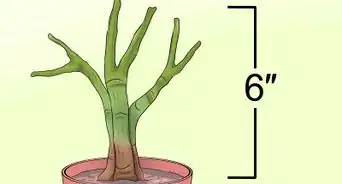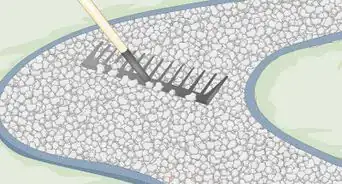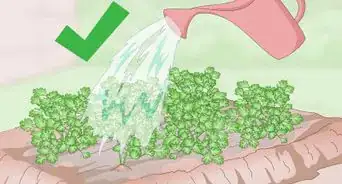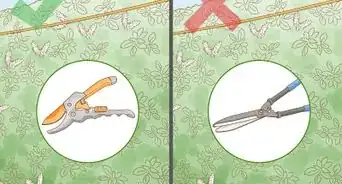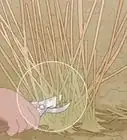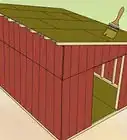This article was co-authored by wikiHow Staff. Our trained team of editors and researchers validate articles for accuracy and comprehensiveness. wikiHow's Content Management Team carefully monitors the work from our editorial staff to ensure that each article is backed by trusted research and meets our high quality standards.
This article has been viewed 11,440 times.
Learn more...
With long, sharp thorns, it can feel like pyracantha, also known as firethorn (for good reason), is actually fighting back when you try to prune it. It’s a hardy shrub that you can shape to form a barrier, but it also produces bright orange berries that can add to the aesthetic of your landscape. Don’t be intimidated by pyracantha. Pruning it is actually pretty easy with the right tools and approach.
Steps
Can pyracantha be hard pruned?
-
1Yes, but you usually only need to lightly prune it. Even though pyracantha is super hardy and will most likely survive and come back from a hard pruning, it isn’t necessary to cut it back too much. Ideally, you want to lightly prune and shape your pyracantha in the spring to encourage healthy new growth. Then, in the summer, you can lightly prune it again to cut off any growth that’s blocking ripening fruit.[1]
-
2You can trim it back to almost nothing if you need to. Pyracantha is a survivor. You can prune it back really far and it’ll push out new shoots from the base. So if you really want or need to cut yours back significantly, you definitely can, and you don’t have to worry about over-pruning and potentially killing it.[2]
How do you prune an overgrown pyracantha?
-
1Wear gloves, pants, and long sleeves to protect your skin. Pyracantha, a.k.a. firethorn, has long, sharp thorns that can really sting you. It’s part of the reason they make such good barrier plants. They can also cause an itchy rash if they scratch your skin. If you’re planning to do some serious pruning, put on some heavy-duty gloves, pants, and a long-sleeved shirt to protect against scratches.[3]
-
2Use sanitized hand pruners and cut off dead or diseased shoots. No matter what type of pruners you use, make sure you spray them with an antiseptic cleaner to kill any potential plant disease or fungus that could affect your pyracantha. Dry them off with a paper towel as well. Look for any dark or dried shoots and clip them off at their base to remove dead or diseased shoots and encourage healthy new growth.[4]
-
3You can also cut off shoots to expose the fruit. If you want your pyracantha fruit to get the most sun and growth, you can cut off the tips of side shoots that cover any clusters of berries. When the fruit turns orange, they’ll get more exposure.[5]
-
4Cut back to the joints of branches when you’re reshaping. Look for where 2 branches meet or where an unwanted side shoot is attached to the trunk to find a joint. Prune at the joint so your pyracantha is better able to recover from the shock of the pruning. Cut back the plant evenly to create a smooth and uniform appearance.[6]
When should pyracantha be pruned?
-
1Wait until the summer to expose the fruit. If you want your pyracantha fruit to really swell up, they need extra sunlight. But don’t cut away branches from around them as soon as you see them forming in the spring. Instead, wait until the summer when your pyracantha naturally switches to focus on fruit production, then prune the shoots and branches that are covering the clusters of berries.[7]
-
2Do any major shaping or cutbacks at the end of winter. If you really want to cut back your pyracantha, wait until it stops growing before you do any serious pruning. The end of winter is a good time. You’ll be able to easily see dead branches that need to be removed and you can cut the whole plant back to get it ready for new growth in the spring. Keep in mind that it isn’t usually necessary to do any major pruning unless you want a specific shape.[8]
-
3If you’re trying to form a hedge, trim it in the growing season. Pyracantha is a great barrier plant, but you need to keep trimming it to help it grow into its shape. In the growing season of the spring and summer, use a hedge trimmer to cut back about 6 inches (15 cm) past where you want the edge of your hedge. Then, let it grow and fill in the space. Encouraging healthy new growth by trimming will help you form a thick barrier. You’ll need to do it 2-3 times to create a formal, even hedge.[9]
- Keep in mind that heavy pruning may cause your hedge not to produce any flowers or colorful berries.
Why are there no berries on my pyracantha?
-
1If you over-prune it, it may not produce enough flowers. Your pyracantha needs lots of flowers to produce their berries. If you prune your pyracantha too much, you could accidentally remove all of the flower buds. That means in the next growing season, your pyracantha may not have enough to produce berries, even though the green shoots are growing well.[11]
-
2They can also drop their berries if they get too dry. Pyracantha will drop their berries if they don’t have enough water or if their roots lose too much moisture because of dry conditions. Try mulching the base of the shrubs to help them retain moisture. You can also give them a potash-rich fertilizer to encourage them to flower and produce fruit.[12]
Warnings
- Wear gloves to protect your hands whenever you prune pyracantha.⧼thumbs_response⧽
References
- ↑ https://www.pyracantha.co.uk/pruning-training/
- ↑ https://www.pennlive.com/gardening/2010/03/pruning_pyracantha.html
- ↑ https://www.gardenguides.com/trim-pyracantha-shrub-8249.html
- ↑ https://www.gardenguides.com/trim-pyracantha-shrub-8249.html
- ↑ https://www.gardenguides.com/trim-pyracantha-shrub-8249.html
- ↑ https://www.pennlive.com/gardening/2010/03/pruning_pyracantha.html
- ↑ https://www.gardenguides.com/trim-pyracantha-shrub-8249.html
- ↑ https://www.pennlive.com/gardening/2010/03/pruning_pyracantha.html
- ↑ https://www.pennlive.com/gardening/2010/03/pruning_pyracantha.html
